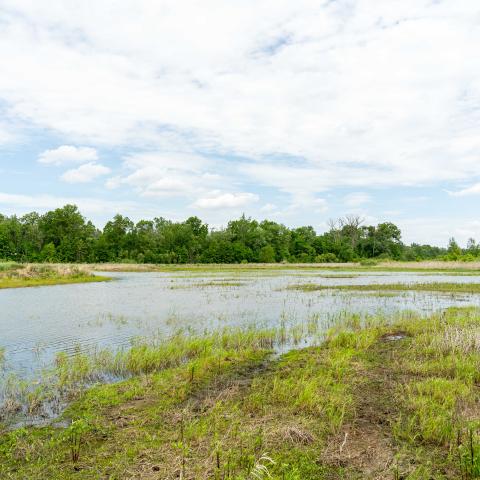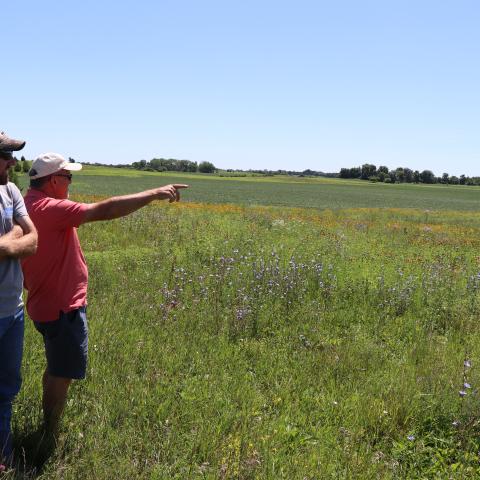Ducks Misery – A Wetland for the Ages
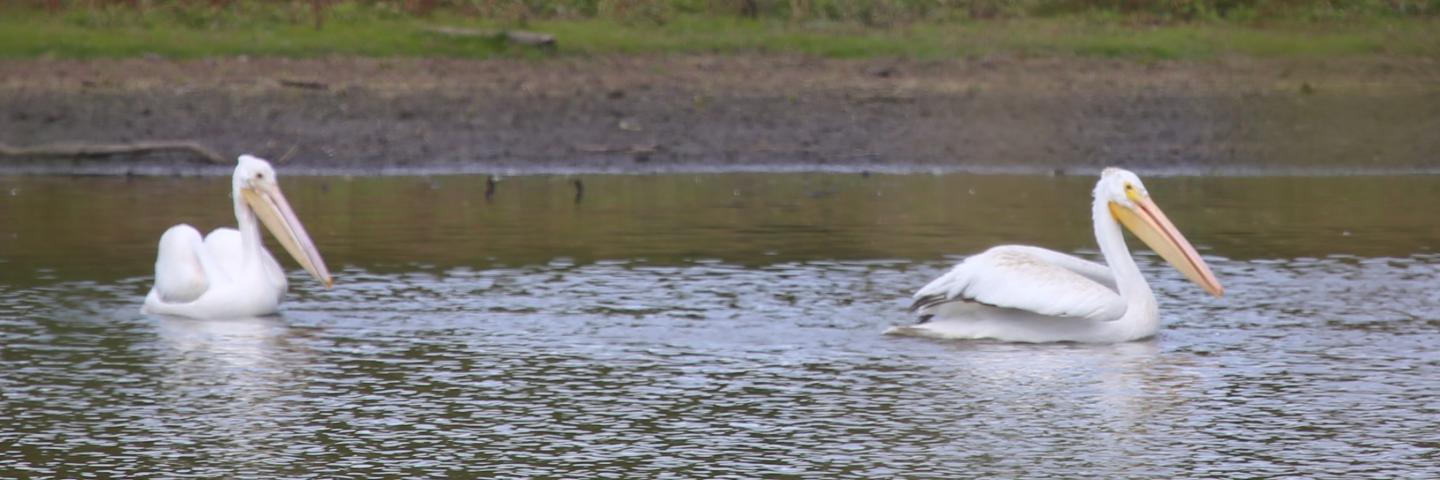
On a parcel of land along the Pecatonica River, just north of Freeport, Illinois, wildlife roam freely through the trees and grasses. Shore birds and waterfowl enjoy the open water for fishing and nesting. “In the spring I have literally seen tens-of-thousands of duck, all different kinds of species
On a parcel of land along the Pecatonica River, just north of Freeport, Illinois, wildlife roam freely through the trees and grasses. Shore birds and waterfowl enjoy the open water for fishing and nesting. “In the spring I have literally seen tens-of-thousands of duck, all different kinds of species,” said Jim Ritterbusch.
He was talking about the restored wetland named Ducks Misery. The name goes back to settlement times when the area was first mapped. Ritterbusch is a District Conservationist with the USDA Natural Resources Conservation Service (NRCS) and was involved from the beginning with the restoration efforts. The wetland site was mostly cropped for years but flooded often. So the owner decided to enroll the 270 acres into a permanent easement through NRCS’s Wetland Reserve Program (WRP). WRP was redesigned within the 2015 Farm Bill and is now available under the Agriculture Conservation Easement Program or ACEP.
“We started the process in 2005 and put it into a permanent easement,” said Ritterbusch. “Within the year, he (the owner) sold the property to the current owners.” Fortunately, the owners today have a love for the natural beauty and abundant wildlife found in the wetland. Even on this nice fall day we saw Canada geese, white pelicans, turkeys, deer, and a Belted Kingfisher. “It is rare to see a Belted Kingfisher,” said Ritterbusch. “That’s the beauty of a wetland that has a diversity of open water, trees and grasses.”
The restoration started in 2007 with tree plantings of Walnut, Swamp oak, Pin oak, White oak and Sycamore. These plantings are located in several locations to mimic what may have been there years ago. For prairie areas, grasses such as Switchgrass, Big Bluestem, Virginia wild rye and Indiangrass were planted to provide protection and nesting areas for birds and mammals. Legumes, such as Partridge pea and forbs like Oxeye sunflowers were planted to food for wildlife and pollinators.
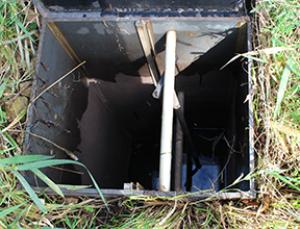
We installed two water control structures to help control the water level in areas where water stands for extended periods. These structures are similar to a stop log structure, with boards that are removed or added to control the water level. The water flows through a pipe from the river into the shallow areas, reaching across approximately 17 feet on either side of the control structure. A flap on the bottom board closes shut from the water pressure so water cannot flow back out to the river. Boards are then stacked to raise the water level about six inches to a foot. If the water gets too high, the boards can be removed to release the water to the proper depth.
In 2007, Illinois Department of Transportation (IDOT) added lanes to the highway located along the wetland border. To restore the areas they disturbed, IDOT planted similar trees and other plantings. These steps extended the wildlife habitat even further outside the wetland area. Five food plots, one-half acre to two acres in size, are scattered throughout the wetland to enhance the food supply for wildlife. Deer, raccoons and other wildlife feed on the corn and other plants in the plots. “Food plots are an acceptable practice and are an important part of wildlife habitat management,” said Ritterbusch.
Landowners reserve five key land rights once they enroll land into a permanent easement: they own the land, pay the property taxes, retain mineral rights, control land access, and retain recreational use. “Beyond those rights,” said Ritterbusch, “they need to get permission from us through a Compatible Use Authorization or CUA.” The CUA is required to maintain the integrity of the restored wetland and that includes maintaining water levels in shallow ponds. The landowners here received a CUA to pump water into shallow ponds for winter. Another acceptable practice is mowing. Mowing is planned outside of nesting habits and schedules so as not interfere with the breeding process. Mowed lanes also serve as a walking path for deer and other animals alongside taller grasses, offering cover from predators.
The Pecatonica River floods two to three times a year and at times damages food plots and plantings of trees and prairies. This has caused some issues with infestation of reed canary grass and unwanted tree species, such as silver maple and cottonwood. “The old growth hardwoods were harvested years ago,” said Ritterbusch. “We are coming back and planting trees that produce nuts, food for wildlife and the squirrels will help with the plantings too.” Some natural occurring native plants have been spotted during the restoration. The button bush shrub flourishes and produces berries and seeds that ducks flock to when water levels are higher. Once the water level lowers, the deer enjoy the native snack. Native sedges, rushes and arrow weed, whose seeds may lay dormant for years, sprout when the conditions are favorable.
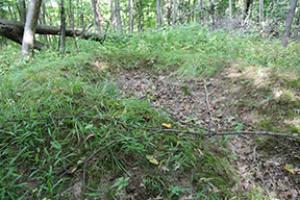
During an initial site inspection, Ritterbusch made a surprising discovery. He noticed two doughnut-shaped earthen structures in the wooded area on a bluff spur adjacent to a backwater slough. They turned out to be Indian burial mounds. NRCS’s Archeologist Sharron Santure did the research and discovered the two circular mounds were identical in size and both were badly vandalized, with huge central craters. “I was really saddened by the news when I heard about the vandalism,” said Ritterbusch. The prehistoric Indian burial mounds were categorized as from either the Middle Woodland or Late Woodland age, which would make them 1,200 to 2,000 years old.
Other trips to the wetland recorded mink, otters, muskrats, beaver, wood ducks, blue herons, eagles, terns, Sandhill Cranes and many more birds and mammals who live or migrate through the area. Ritterbusch said, “We are blessed to have the owners that we do because they care about the land.” The owners live in Chicago and purchased the land for duck hunting. “He hunts two or three weekends out of the year and harvests a few ducks, but the primary purpose is to enjoy the wildlife,” said Ritterbusch. “So we, as a society, get these extra benefits from the wetland.”


